Create a simple sensory area or corner in the classroom with 5 easy steps and 10+ sensory tools and equipment ideas for young children through older kids.
Affiliate links used below. See our full disclosure.
Having a sensory area in a classroom can help lots of students calm down, focus, and learn more easily. As an occupational therapist, I’ve helped teachers set up sensory corners in their classroom or at least incorporate some sensory ideas into the classroom with my expertise in sensory processing.
It’s important that these sensory areas aren’t obtrusive or distracting, but support kids with known sensory issues, Sensory Processing Disorder (SPD), Autism, or ADHD, as well as kids without any diagnosis or specific sensory issues.
Because using sensory tools, toys, and strategies stimulate every child’s development and self-regulation.
While teachers aren’t traditionally trained in sensory processing or learn sensory activities, there’s a powerful place for them in the classroom, where children spends large portions of their day.
But, including a sensory area in a classroom can be simple. If you’re a teacher, I’m applauding you right now for learning about how to incorporate a sensory space into your classroom.
If you’re a parent, you can use this guide to share with your child’s teacher (see the buttons at the bottom of the post), and possibly help them set it up in their classroom.
What is a Sensory Corner in a Classroom?
A sensory corner or area in a classroom is a place for children to engage in sensory experiences that calm or stimulate them so they can function at their highest ability in school.
These areas may include a quiet space where kids can retreat for a few minutes, some sensory equipment, or a space for sensory movement.
The space can be small or a large area in the classroom and can cost nothing or have therapeutic sensory tools. And, it’s appropriate for early childhood classrooms through elementary school, and in some cases, beyond.
Some schools will designate a specific sensory classroom, which usually includes a budget, and might mimic an pediatric occupational therapy treatment room. They’re often filled with sensory equipment and children can either use it on request or build it into their schedule to spend time in the sensory room.
However, even if a school has a multi-sensory room, there’s still great benefits in having a sensory area in each classroom. Here’s why…
Why Every Single Classroom Could Use a Sensory Area
With high percentages of children having autism spectrum disorder and sensory processing disorder as well as various other developmental disorders and physical disabilities, sensory activities are known to help kids self-regulate which ultimately improves their academic performance and socialization skills.
While a sensory corner is especially important for a special education teacher to consider, every classroom has children with sensory needs in it.
It’s easy for their needs to fly under the radar, or be seen as misbehavior.
Moreover, sensory processing is the foundation for all learning and sensory stimuli is beneficial and can be a coping strategy for all kids.
How to Create a Sensory Area in a Classroom
Creating a sensory area is easier than you might think, and when set up well, it will have a positive impact on the classroom environment. Here’s how you can create one:
Step #1: Find or Make a Space in the Classroom
Look for some free space in the classroom, a corner often works well that is dedicated to a sensory area so that students’ needs can be met. It doesn’t have to be a very large area, but having it somewhat away from the main activity of the classroom would be helpful so that kids feel like it’s a safe space when they’re overwhelmed or dysregulated.
Step #2: Eliminate Visual Clutter
Image from School Specialty Canada
While it’s helpful to have charts, posters, and schedules posted, when the walls are covered it can quickly overwhelm any child, and especially one that’s at sensory overload. Less is more when you’re setting a sensory area in a classroom in terms of visual stimulation, try these visual sensory activities for kids who have trouble with visual processing..
Step #3: Use Barriers
In order for the sensory area to feel like a safe space and reduce sensory input that can be over stimulating, you’ll want to add a pop up tent, fabric tent, hanging tent (like the one shown above), or you can even drape your own old sheet creatively to make a fort.
Another option is to rearrange book cases or other furniture in the classroom to naturally create these barriers.
Step #4: Add in Sensory Seating
Think about having a wobble cushion, some pillows, a bean bag chair, exercise balls, or a rocking chair to your sensory area, all of which give sensory input. The example above used some pillows in a baby pool to help define the area and create a specific place to sit.
I also love these small rocking egg chairs that stack together, my oldest son’s 2nd grade teacher had these in her reading nook and the kids loved them. But, a hand me down rocking chair may work too, depending on your space and the size of the kids in the classroom.
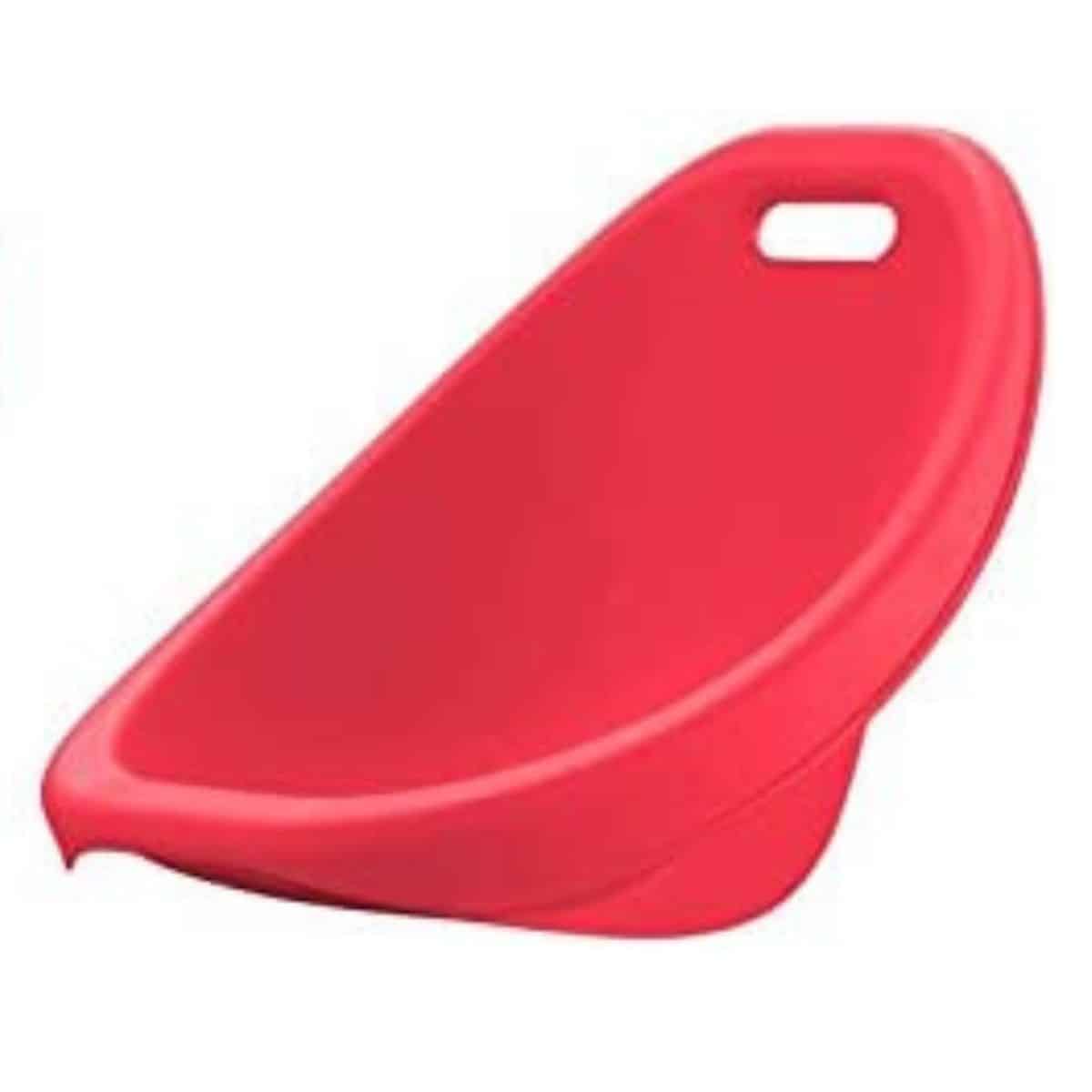
Step #5: Have Sensory Equipment and Tools Available
The sensory equipment that you add can be minimal or more sophisticated depending your budget. Having a tent or covering is certainly part of the equipment, but there are some other types of sensory tools you might want to include. Remember not to over do it though.
In the next section, I’ve listed lots of options to consider, including some DIY versions if the teacher doesn’t have much of a budget. These items are also great to add to a teachers wish list, if one is available.
Some of my kid’s teachers have asked to buy a gift for the classroom when a child’s birthday rolls around instead of sending in favors. Any of these ideas below would be great to offer as suggestions!
10 Sensory Ideas for the Classroom
Add any or several of these sensory tools to your sensory corner in the classroom:
1. Body Sock – Inexpensive and barely taking up space in a room, kids can climb into the large stretchy pillowcase that is a body sock. As they spread their arms and legs they get lots of calming proprioceptive and vestibular input. See our complete guide to body socks.
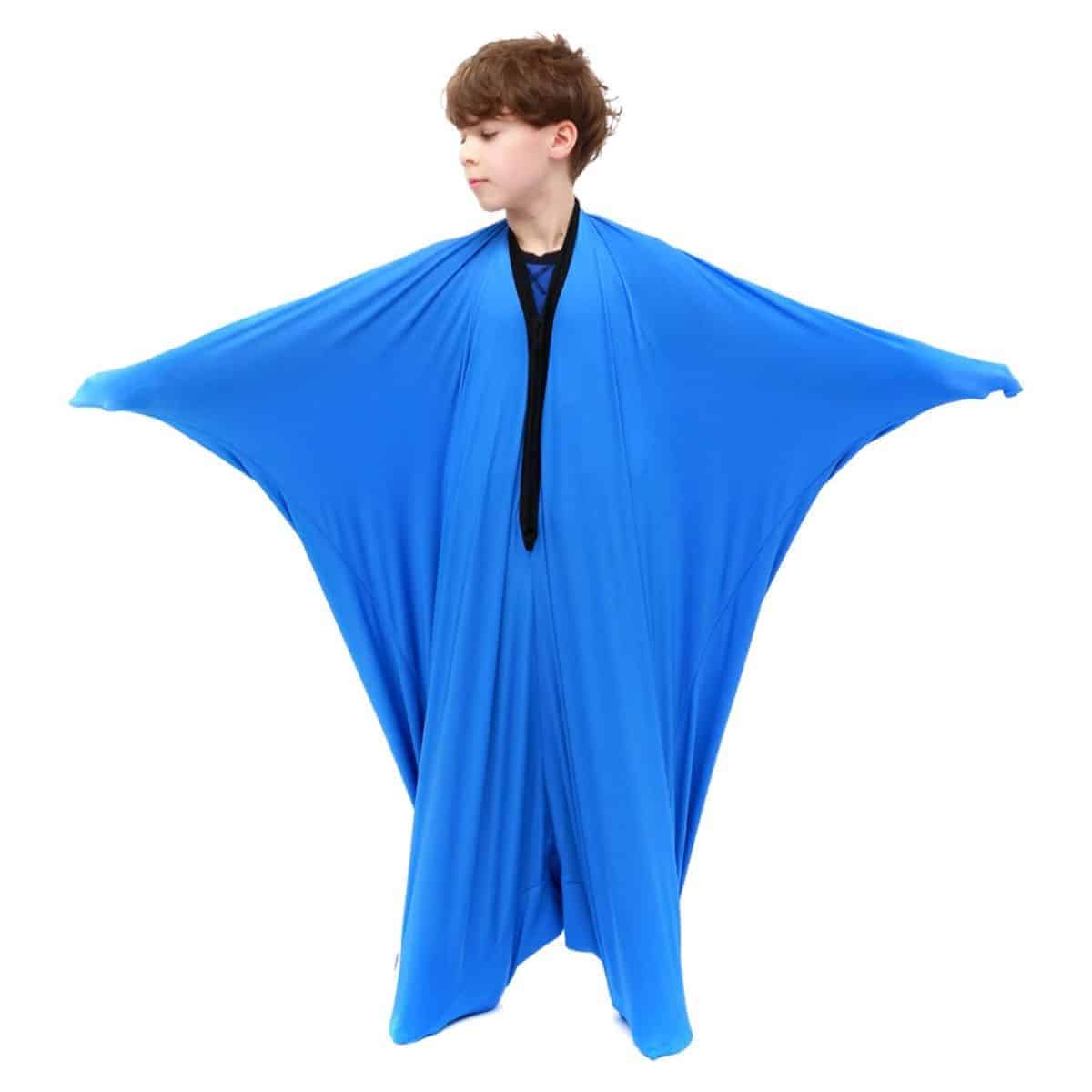
2. Vibrating Handheld Massager – Less than 10 bucks, vibration is super sensory stimulation that can help calm some kids down quick. Start a basket with a few small sensory toys and put this in it. Students can decide if they want to hold it or rub on their arms or legs when they’re in the sensory corner.
3. Jellyfish Lamp – You’ll want to consider adding something that’s calming visually for kids to look at. I love these jellyfish lamps (my kids have them) because you can switch between a variety of colors and if it accidentally spills, it’s just water. Lava lamps are also cool, but they get very hot and are unsafe for kids to touch. If you have a big budget, you could also consider bubble tubes.
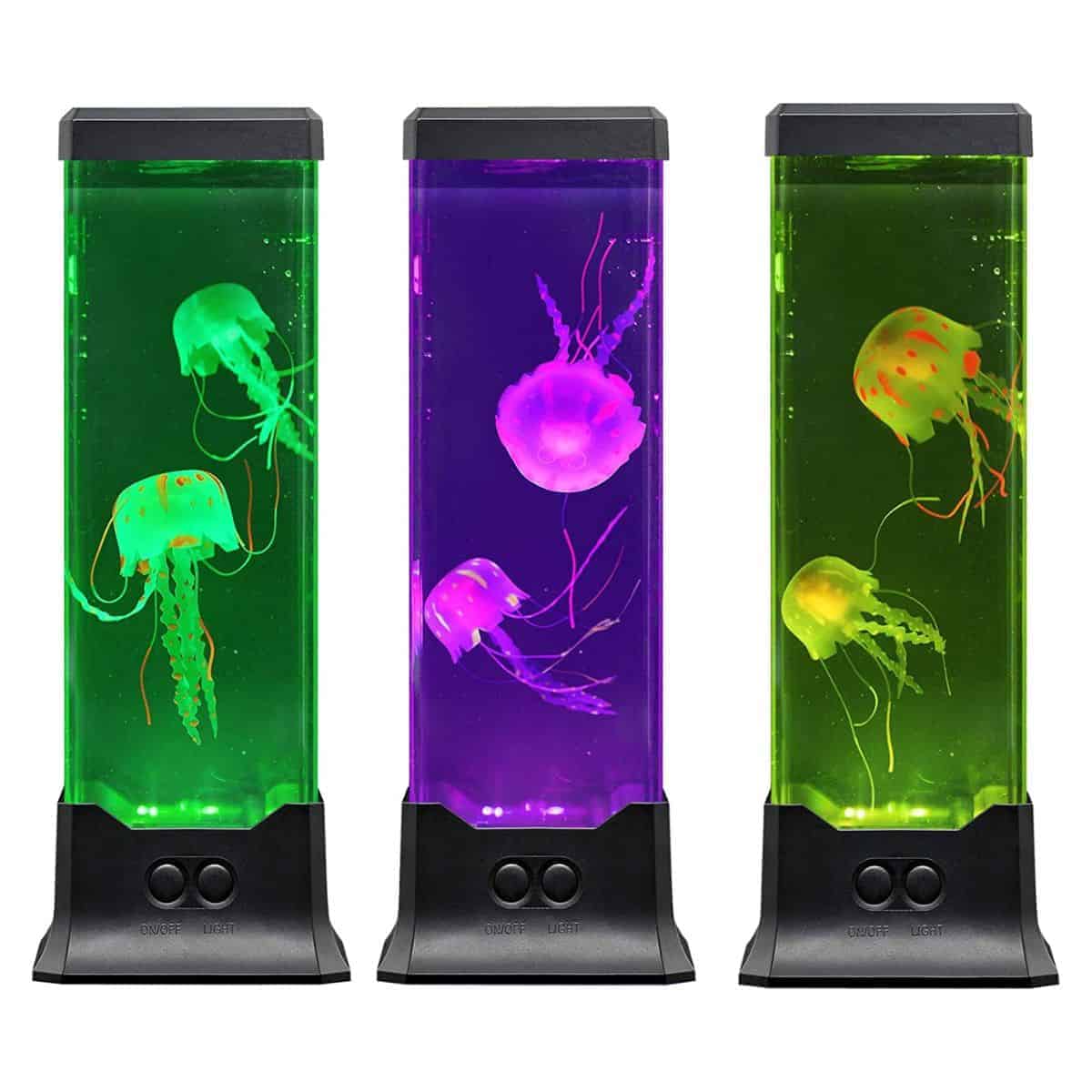
4. Stress Balls – Squeezing a stress ball gives kids an appropriate way to get the proprioceptive input they’re often seeking when they keep getting out of their chair, bounce up and down, or hit other kids. Put some of these in the sensory area of the classroom too.
5. Fidget Toys – There are a plethora of different fidget toys, each offering their own advantages. Consider what the teacher is willing to have in the sensory corner of their classroom and go from there. Fidget spinners can help kids calm down, as well as the popular pop-it style, but the latter does make a noise.
6. Lap Pad – A weighted pillow that can be laid across a child’s lap also gives proprioceptive input. You can buy one or easily make one from a large sock filled with dry beans too! Learn more about the best lap pads.
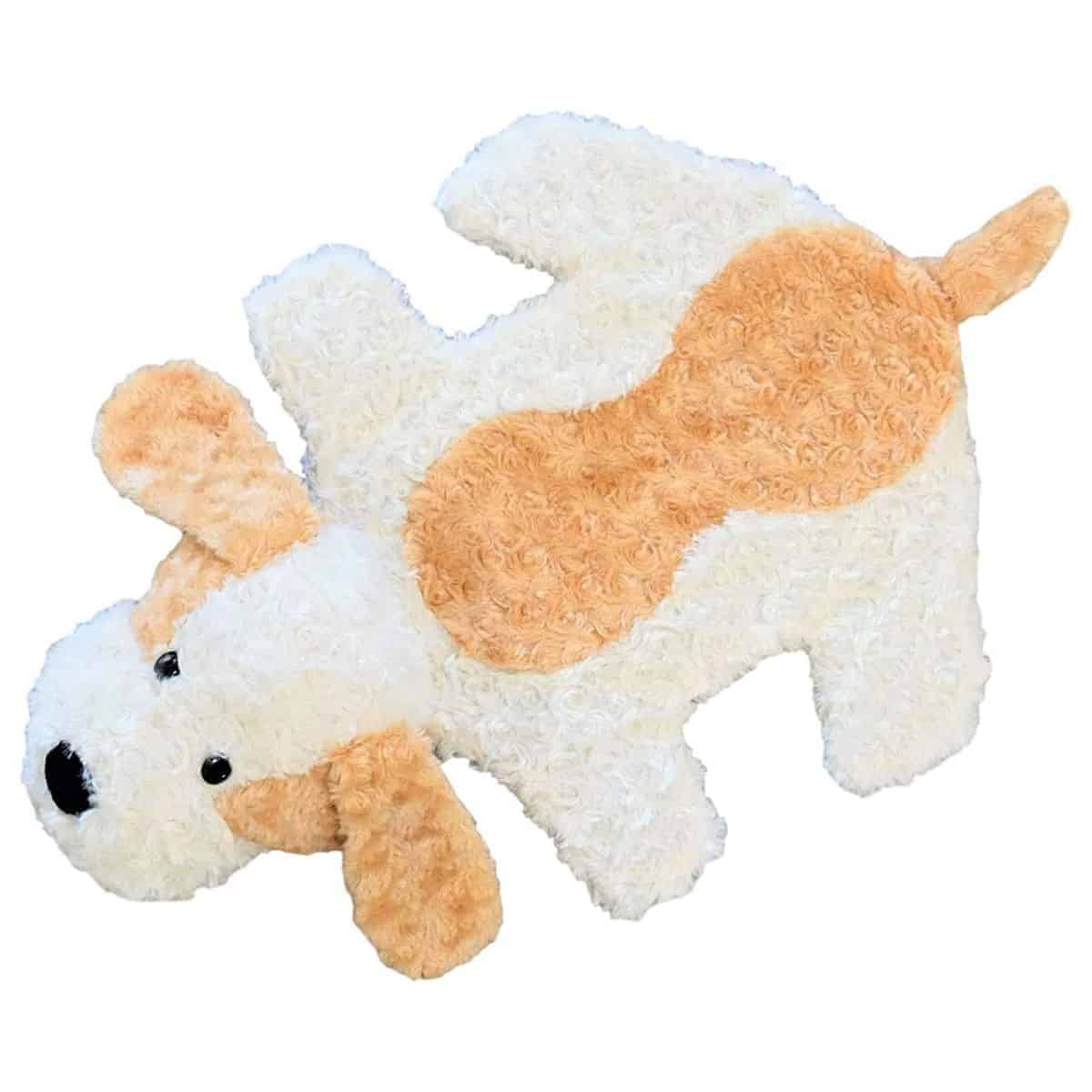
7. Mini Trampoline – If there’s ample space in the sensory area, include a small mini trampoline with a handle. It can help kids that are sensory seekers get the movement they need.
8. Noise Canceling Headphones – Some kids that are sensory avoiders will be looking for a safe place when they head to the sensory corner. Having noise canceling headphones available will give them the break from sensory information they’re looking for.
9. Sensory Bag – Another way to stimulate visually is to have a look and find bag made from some hair gel and small treasures. Making a few could even be a classroom project. Get a DIY tutorial here.
10. Gel Floor Tiles – If you have a bigger budget, the gel colored floor tiles could be a great addition to your sensory area as well. Line them up as stepping stones on the way to the sensory corner in a classroom or use them as the floor!
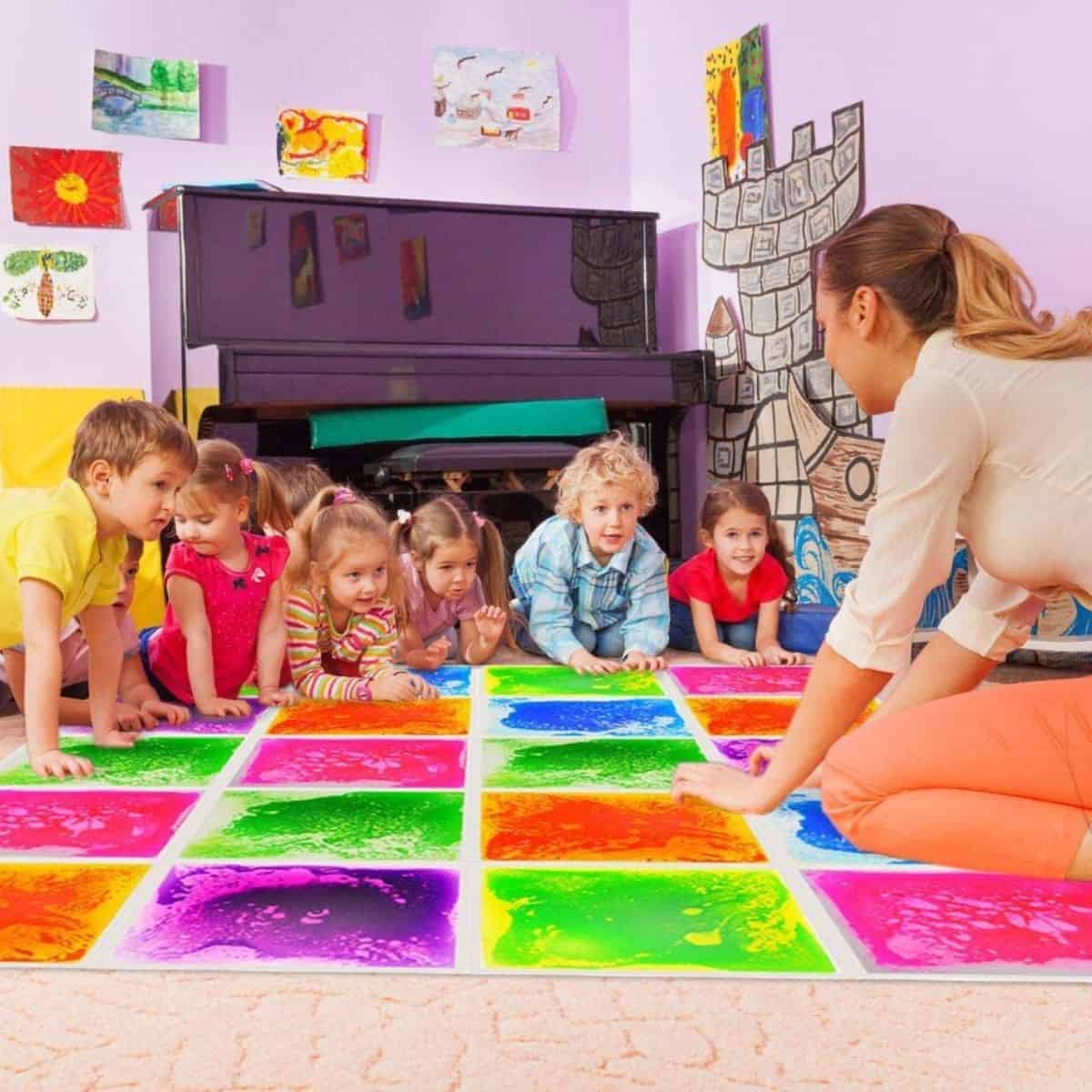
More Sensory Ideas for the Classroom
There are a wide range of different needs in any classroom environment, but besides having a sensory corner, you can use a few other sensory ideas through the school day:
- Movement Breaks – Incorporate movement breaks into your day at regular intervals. Look for times when students can stretch their legs, do a few yoga poses together, or watch a Go Noodle video. Get more classroom movement break ideas!
- Heavy Work Activities – Anytime kids can help carry, push, or move heavy objects, they’re getting proprioceptive input that can help calm them. If you need to move desks and it’s age appropriate, let students help. Get more heavy work activity ideas.
- Sensory Diet Cards – For kids with specific needs, you may want to use sensory diet cards to help them choose from several sensory activities that they may need either at scheduled points throughout the day or when they begin to struggle to focus or get overstimulated. Get a set of cards here.
- Always Have Recess – Avoid ever taking away kids’ recess, getting the chance to move, be outside, or even in inclement weather, having a chance to relax is critical for most kids sensory system. Don’t use taking away recess as a punishment ever as it’s detrimental to sensory and emotional regulation.
Follow us on Pinterest for more great ideas! And, to learn more about which students have sensory needs grab our 21 sensory red flags printable here!
More Sensory Classroom Ideas
13 Easy Sensory Strategies for the Classroom
Sensory Self Regulation: A Critical Skill for Kids with Sensory “Issues”
How to Keep Kids Focused for Online School
7 Tips to Get Picky Eaters Eating the School Lunch
Alisha Grogan is a licensed occupational therapist and founder of Your Kid’s Table. She has over 18 years experience with expertise in sensory processing and feeding development in babies, toddlers, and children. Alisha also has 3 boys of her own at home. Learn more about her here.
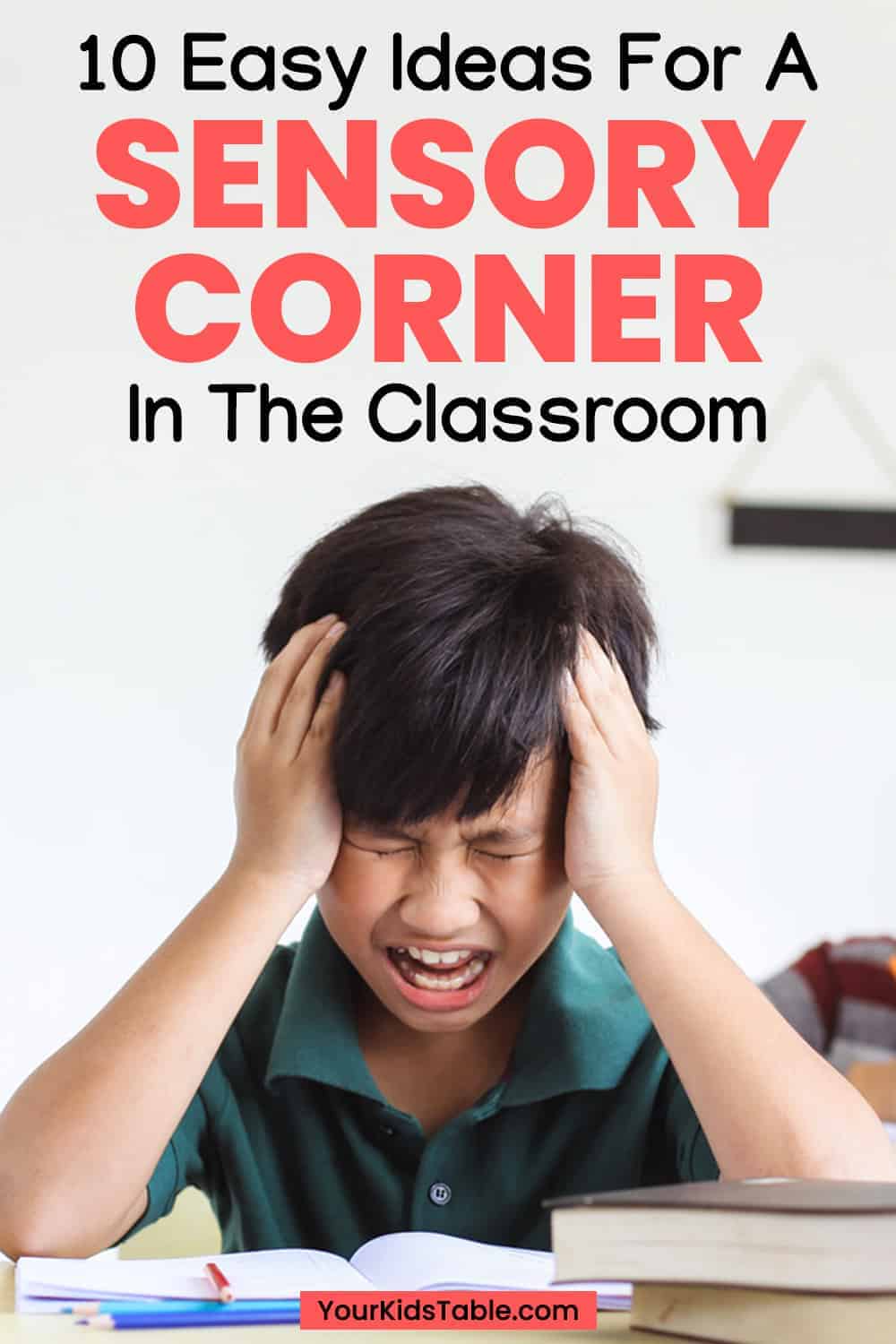
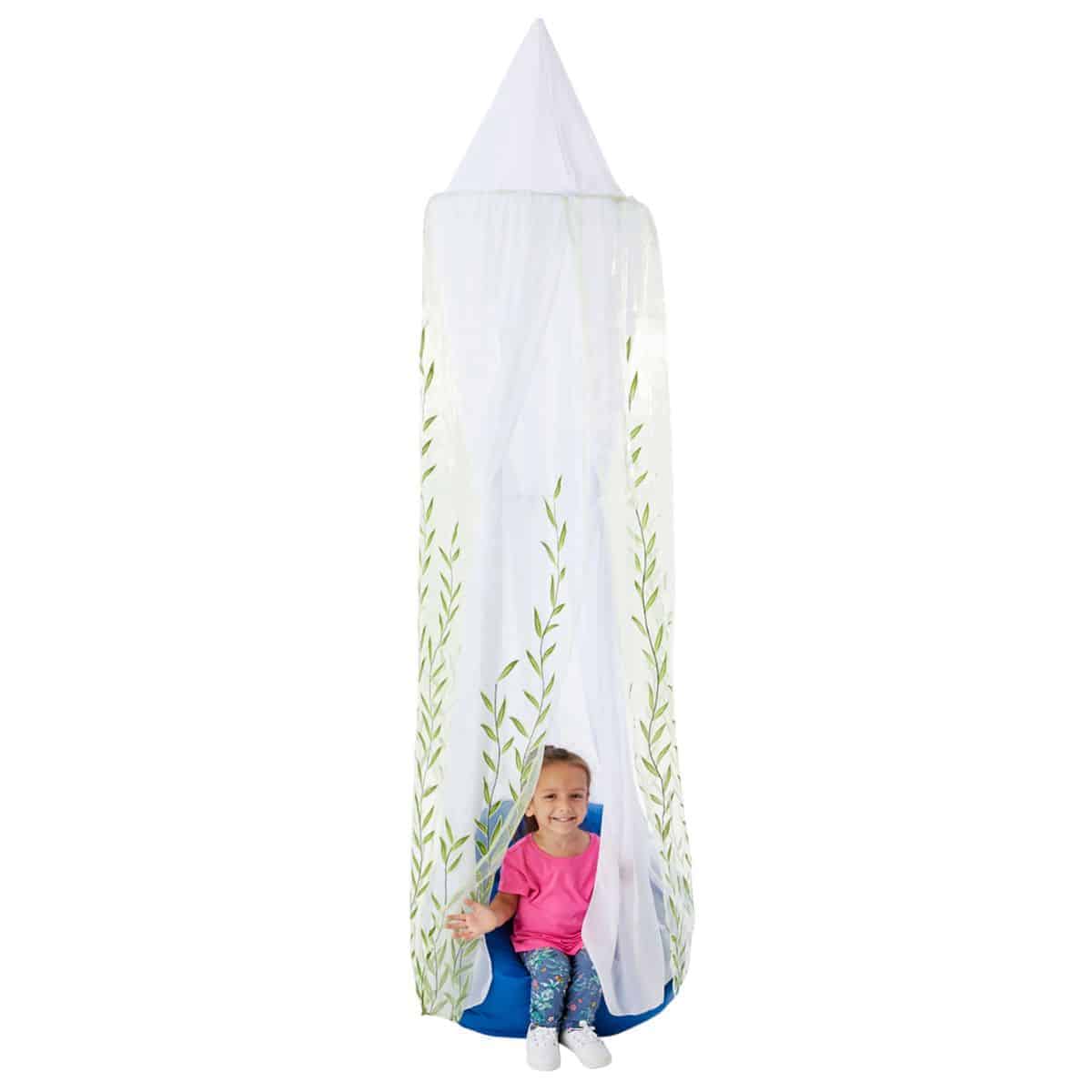
great ideas Alisha! hopefully grandson’s school has something in place.
they focus “brain breaks”, but haven’t heard about the calming corner. Love it
Hi Pamela! Thanks for reaching out and sharing your feedback- glad you found this information helpful 🙂
Best,
Kalyn